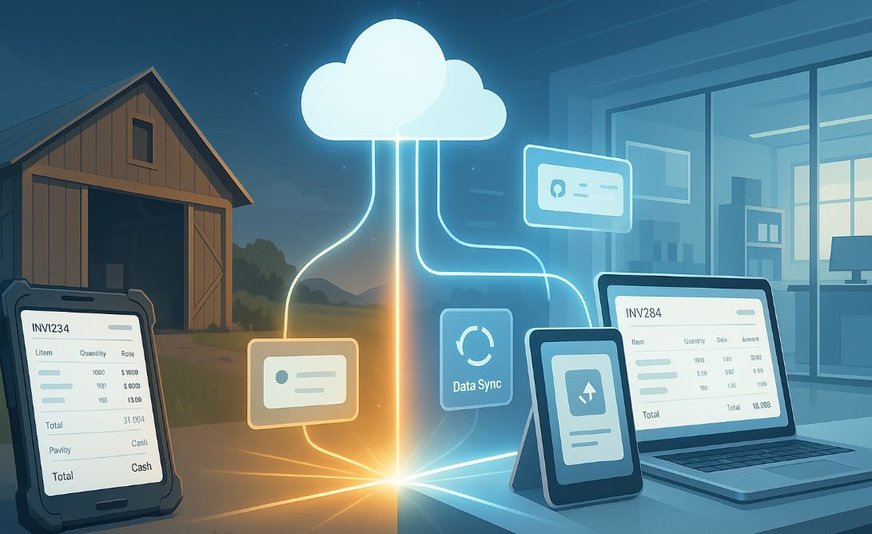Solving Offline ERP Challenges with a Custom ERPNext Synchronization Solution
At ClefinCode, we recently accomplished a significant technical breakthrough that solves a recurring pain point for many ERPNext users—ensuring uninterrupted ERP operations during internet outages. This is particularly vital for businesses like hypermarkets, POS-driven retail outlets, or remote warehouses that cannot afford to lose operational capacity due to short or extended network disruptions.
The Challenge: Ensuring Continuity in Unstable or Offline Environments
Many ERPNext users face critical limitations when connectivity to the central (cloud-hosted) ERP is lost, even temporarily. This issue becomes severe in environments such as:
- High-volume retail locations (e.g., hypermarkets or grocery stores) where any interruption in POS operations can halt sales.
- Warehouses located in areas with poor or no internet coverage, where inventory adjustments or reconciliations must still proceed.
Until version 12, ERPNext included a browser-based offline POS feature that allowed temporary local cache usage. However, this feature was removed in favor of a newer solution: Event Streaming. Initially integrated into ERPNext and later moved to a standalone Frappe app in version 15, event streaming was designed as a generic synchronization system for any DocType. While conceptually promising, this tool proved unstable and complex in practical scenarios. Many users struggled with configuration, reliability, and performance—especially in use cases like offline POS operations.
Our Solution: A Fully Functional Local ERPNext Instance with Secure Cloud Sync
To address this gap, we developed a complete offline synchronization mechanism that enables ERPNext to function seamlessly on local devices—across Windows, Linux, and macOS—while offering a straightforward synchronization pipeline with the cloud instance.
Key Features:
- Local Installation on Windows Systems: Recognizing that most devices in the field run Windows, we implemented the offline ERPNext instance using Windows Subsystem for Linux (WSL). This allowed us to run a full Linux-based ERPNext environment directly within Windows, making it easy to distribute and install the system on any device using USB or portable storage.
- POS Operation Resilience: Sales teams using POS can continue working uninterrupted during internet outages. The system switches to the local instance, enabling continued selling. Once internet connectivity is restored, the system displays a list of pending POS invoices and provides a single-click option to push those invoices to the cloud.
- Cloud Backup Sync at Day Start: Each day, users can initialize their local system with the latest data by downloading a full backup from the cloud ERP. This ensures the local environment is up-to-date before operations begin.
- Security and Access Control: Every push or pull operation (whether syncing invoices or downloading a fresh backup) is secured by credential-based access. The system requires the user’s username and password, maintaining a secure channel for synchronization tasks.
Extending Use Cases: Offline Stock Reconciliation in Remote Warehouses
Beyond POS, we successfully implemented our offline solution for stock reconciliation in remote warehouses. In one use case, the client installed the ERPNext local instance on a laptop, paired with a Zebra Android scanning device. We built a Flutter mobile application to perform high-speed scanning of warehouse inventory. Once the user returned to an internet-covered area, the reconciliation records were synchronized back to the cloud ERP through our custom sync tool.
This use case demonstrated that with minor customizations per DocType, our solution could extend to a variety of offline operations beyond just sales.
Technical Vision: Toward a Universal Synchronization Engine
Our success with POS and stock reconciliation has inspired a broader internal project aimed at creating a universal DocType synchronization engine. While still under development, the vision is to allow seamless configuration and synchronization for any DocType, including its linked data and ledger entries—creating a robust foundation for offline-first ERP operations.
Although ERPNext's event streaming remains a conceptually valuable feature, it has not yet matured into a practical, stable solution for most real-world users. Our hands-on, purpose-built approach bridges this gap with reliable, scalable, and user-friendly implementation.
Conclusion
This project showcases our ability at ClefinCode to deeply understand client needs, overcome platform limitations, and engineer reliable, scalable solutions tailored for real-world use. Our offline ERPNext implementation delivers tangible business continuity for POS and warehouse operations—and sets the stage for future innovations in ERP decentralization and synchronization.
If your business is facing similar challenges or requires custom ERPNext solutions, we’re ready to help.

Sure you can reach us on: info@clefincode.com +971585997930
I am interested in this feature. Would to see a test case or the POS Sync module
Yes, indeed — our team has successfully built a solution for offline installation on Windows, along with auto-sync functionality specifically for POS Invoices. We've also implemented synchronization for Stock Reconciliation documents.
The key challenge when working offline and pushing updates to the remote server is ensuring each specific DocType is supported by the sync logic. At the moment, we’ve developed this sync for the two mentioned DocTypes. If your workflow includes other types of entries, we’d be happy to extend the solution to accommodate those as well — it just requires implementing a dedicated sync routine for each additional DocType. I have sent you an email and we can schedule an online meeting where I can demonstrate how the system works in action and explore how this setup can best support your business needs
I have issues working with offline mode and syncing with the remote server. I noticed your team has sorted that issue out. Can we have a discussion on how I can implement your solution for my business.
Regards